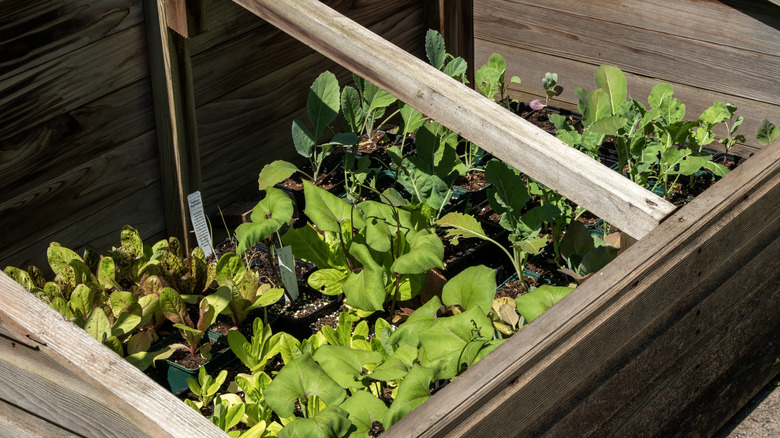How To Help Spinach In Your Garden Survive Harsh Winter Weather
Spinach is a bitter green that might be the solution to your empty garden in winter, when most plants have died or are hibernating. Seedlings can survive even during freezing temperatures as low as 15 to 20 degrees Fahrenheit. Although it's naturally a cool-season crop, if you want it to succeed in the coldest climates, you need to take some precautions. For the best results, plant your spinach seeds before the ground freezes. The ideal soil temperature to germinate seeds is 45 to 68 degrees Fahrenheit. Check for your area's average first frost date, and sow your seeds six to eight weeks before then.
You can grow spinach directly in the ground or in containers. When the temperatures get extremely cold, spinach plants can experience cold injury or stop growing without protection. The protection method you need to use will depend on how you're growing the spinach and the temperature. However, the goal of all of them is to keep your spinach plants at an optimal temperature for growth. If you plant spinach in containers, you can move them indoors if the temperatures drop too low. Spinach that's sown directly in the ground can be protected with row covers. Cold frames create a mini greenhouse environment for both raised beds and in-ground spinach.
Extend the spinach growing season with cold frames
No matter how you choose to grow spinach, you need to prepare the environment. Work compost into the soil before you plant. Then, cover the beds with a clear cover after planting. This protects the new plants from snow and ice and helps keep the soil warm. However, you can remove the cover during rainy days to water the plants.
If you grow your spinach in containers, the roots are more likely to freeze if the temperatures stay below freezing for an extended period of time. You can protect the roots by surrounding the pots with bags of dirt or mulch or by moving them inside. They'll also stay warmer if you put them against a south-facing wall since it will be exposed to more heat.
Another protection method for growing spinach throughout a long, harsh winter is extending the growing season in your garden with a cold frame. Though it's similar to covering your raised beds, a dedicated cold frame offers your spinach even more protection. You can plant seeds even after the first frost because a cold frame is essentially a small greenhouse. This is ideal if you're gardening in an area with long winters. You can buy cold frame kits, but they're simple to DIY with salvaged windows or glass doors. Measure your windows or doors, and cut boards long enough to allow the window to overhang the edge by at least ½ inch. The boards should be at least 18 inches wide. This simple and inexpensive DIY is a great way for beginners to start a backyard winter garden.

